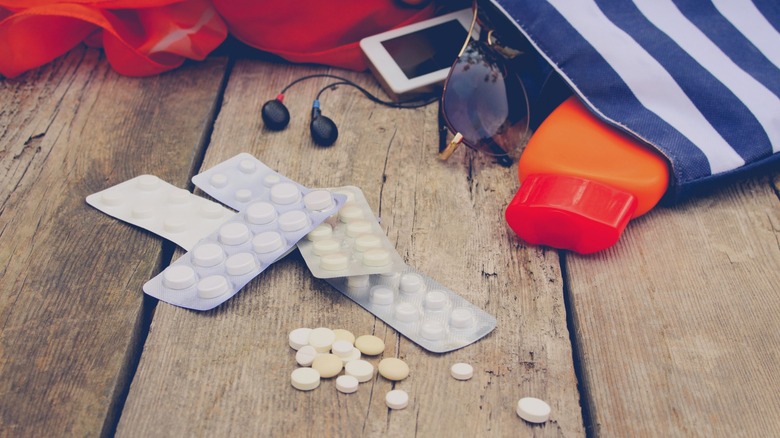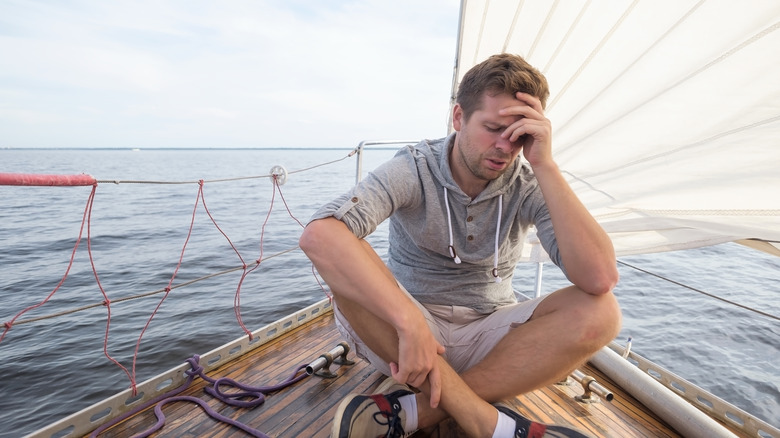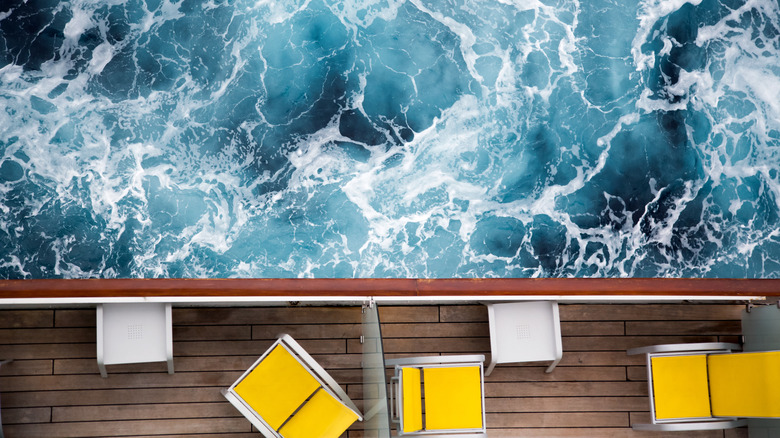How To Figure Out Which Medication Is Best For Seasickness On A Cruise
We may receive a commission on purchases made from links.
You're on a cruise, admiring the views from the deck, and then it hits you: seasickness. You just want to enjoy your vacation, but the motion of the ocean has other plans. Seasickness is common. It occurs when the brain receives conflicting signals about the body's position in space from the inner ear. Fortunately, with the proper medication in your first-aid kit, seasickness can be conquered so you can enjoy your cruise, no matter what the sea has in store.
There are several over-the-counter and prescription medications available for the prevention and treatment of seasickness. Each has its advantages and potential side effects, so choosing the right one requires a bit of knowledge and some trial and error. However, if you know that seasickness always gets the best of you, just bring them all and see what works. Antihistamines, which include Dramamine and Bonine, are an affordable, effective, over-the-counter option. These work by blocking signals to the brain that trigger nausea and are considered among the most popular medications for seasickness.
The main difference between the two antihistamines is that Dramamine contains dimenhydrinate, while Bonine contains meclizine. Dramamine kicks in faster but lasts a shorter time period, between four to eight hours, and generally causes more drowsiness. Bonine, on the other hand, causes less drowsiness, lasts longer, and stays in the body for up to 24 hours. Whichever you choose, you should ideally take your dose about an hour before setting sail (per Verywell Health).
Understand your options
Cinnarizine, the medicine cruisers swear cures even the worst seasickness, is a great alternative to Dramamine. Also an antihistamine, it blocks nausea and helps improve blood flow in the inner ear (per NHS). Another option, especially if you're taking a longer cruise, is scopolamine. This medication, which can only be prescribed by your doctor, comes as a skin patch that is applied behind the ear. Apply the patch at least four hours before your cruise, and leave it there for three days. After three days pass, you can apply a new patch behind your other ear (per MedlinePlus). All of these over-the-counter (OTC) and prescription medications do share very similar potential side effects, which include dry mouth, blurred vision, and drowsiness.
For anyone who prefers a more natural approach, ginger can be a lifesaver. You can take it as a capsule, gummy, or tea, and even eat the fresh root as it is (if you can handle the intense flavor). Ginger contains bioactive components gingerol and shogaol, which have anti-inflammatory properties, can regulate blood pressure to calm the body, improve digestion, and reduce nausea (per Healthline). Peppermint, chamomile, and licorice root can also help. Another natural and non-invasive method is using acupressure bands. These bands fit around the wrist and use special pressure points to alleviate the unpleasant symptoms of seasickness — some cruisers swear by these. They can be purchased at pharmacies, specialty stores, or online from brands like Sea-Band.
Non-medicinal strategies for seasickness
When selecting your medication, it's important to consider your health profile, including any existing conditions, allergies, or medications you are currently taking. For example, if you are prone to drowsiness, a less-drowsy antihistamine like meclizine may be a better choice than dimenhydrinate. If you have glaucoma or are taking certain medications for depression or psychiatric conditions, scopolamine might not work. Consulting with a doctor or a pharmacist can provide tailored advice based on your health history and the specific details of your cruise.
Other than medication, there are several non-pharmaceutical strategies that can help prevent or alleviate seasickness. One of these happens right at the booking step before your cruise even starts — carefully selecting where you're located on the ship, which can make a boatload of a difference. The best spot to be on any cruise ship if you experience seasickness: the middle. Ideally, a mid-ship cabin with a balcony on the lower deck. These are the most stable cabins and will ensure little to no rocking motions for a smooth cruise.
Otherwise, preventing seasickness comes down to your daily routine on the ship. Stay hydrated by taking frequent sips of water throughout the day, especially if you're getting plenty of sun or being physically active. Electrolyte water or coconut water are fantastic options. Avoid heavy, greasy meals, alcohol, caffeine, and energy drinks, as all of these can exacerbate nausea and dizziness. If nothing else, focus on the horizon and breathe in the fresh ocean air.


